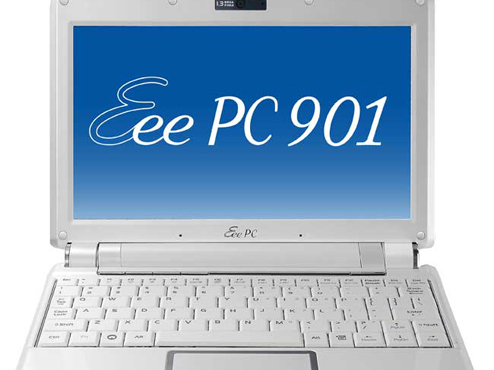New Eee PCs offer larger screens and extended battery life
Is Asus's sub-notebook now musician-friendly?

Asus has officially unveiled its revised line-up of Eee PCs. This features the 901, 1000 and 1000 (H) models. Final specs are still to be confirmed, but it already looks like these new machines will be more musician-friendly than the original Eee PC.
The new ‘sub-notebooks´ are currently being shown at the Computex IT show in Taiwan and are said to offer an extended battery life of up to seven and a half hours. This is thanks to the new Super Hybrid Engine, which is designed to minimise power consumption.
Musicians will also be pleased to learn that the revised Eee PCs feature larger displays; the 7-inch screen on the first version is restrictive when you´re trying to run a DAW. 8.9-inch and 10-inch versions will be available.
The keyboard will be bigger, too - 92% of a full-size laptop keyboard, in fact, while we can also look forward to increased solid state storage capacities.
The new Eee PC´s will ship with either Windows XP or Linux (most musicians will choose the former) but sadly, pricing and availability details are still to be confirmed.
By Ben Rogerson
Want all the hottest music and gear news, reviews, deals, features and more, direct to your inbox? Sign up here.

I’m the Deputy Editor of MusicRadar, having worked on the site since its launch in 2007. I previously spent eight years working on our sister magazine, Computer Music. I’ve been playing the piano, gigging in bands and failing to finish tracks at home for more than 30 years, 24 of which I’ve also spent writing about music and the ever-changing technology used to make it.